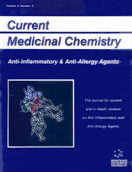Abstract
Autoimmune diseases are caused by a misdirection of the host immune system against the self. After the triggering of self-reactivity, two successive phases, i.e. the acute / deterioration phase and subsequent chronic phase are observed during the course of manifestation and maintenance of autoimmune symptoms. Not only inflammatory chemokines but also homeostatic chemokines are involved in effector cells migration and the development of tertiary lymphoid tissue in the target tissue. In the acute / deterioration phase, Th1-associated chemokines and a vicious cycle of type 1 immune responses are crucial for the destruction of the tissue. Subsequently, homeostatic chemokines play important roles in organizing ectopic lymphoid tissue for sustaining autoreactivity in the chronic phase. If they are only correctly directed toward invasive pathogens, immune responses are, essentially, an evolutionally acquired function of the adaptive immune system, which is quite efficient for eradicating non-self. However, if self-components accidentally happen to become the target of the host immune system, a serious situation ensues. For clinical treatment, both inflammatory and homeostatic chemokines would be promising targets in the different phases of autoimmune diseases.
Keywords: chemokines, autoimmune diseases, homeostatic
 6
6

